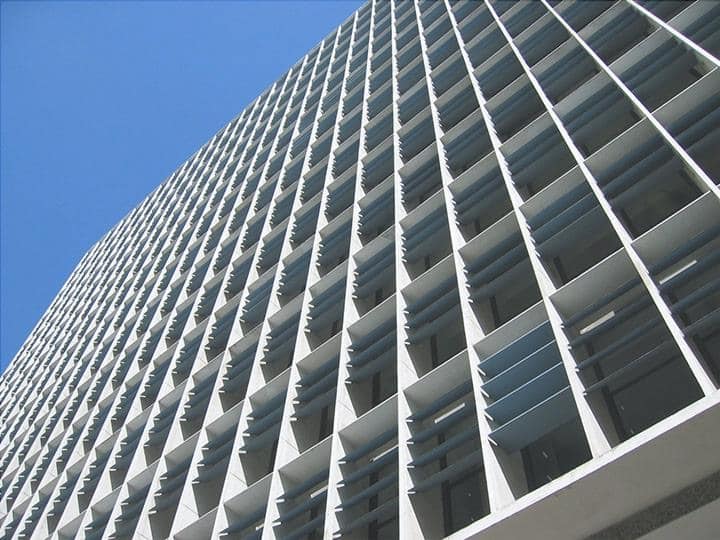Brise-soleil | the Control of the exposure to the sun
Also known as the breaking of light, the term’ brise came from the French, brise-soleil, which in free translation is “break the sun”. The brise is made of boards in vertical or in horizontal – fixed and mobile – in order to reduce and control the penetration of direct sunlight into the building (to avoid overheating). This device can be attached, which is used extensively in buildings from the 1920s, or even electronically, helps in the distribution of natural light in the environment and to decrease the thermal load (temperature).
The brise-soleil are frequently used in buildings and other structures that require both natural light and block the glare (of action or as a result of the obstruction of the view – in this case, the amount of sunlight caused by the sun’s rays, such as schools, colleges, universities, shopping malls, hospitals, shopping centers, and many, many others.

Brise of the ministry of education in Rio de Janeiro, is the first example of the use of brise-soleil of vertical and horizontal architecture.
The content
The types of brise-soleil
The brise-soleil moving is considered to be the most efficient/effective because you have the mobility in the fin. The use of this type of brise is particularly recommended for use in buildings with a façade made of glass, where the heat source is practically during the whole of the cis, making it necessary to adjust the journal to the guard in order to protect the areas of the direct impact of the sun.

The differences in the operation of the brise of the horizontal and the brise-vertical
The brise-soleil, fixed , must be designed and located in accordance with the exposure to the sun, for example, the facade of the building, which is to the north always get the sun all day, so it should be used for the brise-soleil of horizontal, or to the east facade, which receives the sun in the morning (sunrise) and the west front, which receives sun in the late afternoon (sun set), it is recommended that the use of the brise-soleil of vertical. As on the facade to the south has a lower incidence of the sun, there is no need of a brise-soleil. The tabs referred to may be made of wood, plastic, concrete, aluminum, iron, etc. In short, studying the guidance from the windows of the building, and the choice of the brise the most suitable, and keep in mind, especially the appearance, performance, cost, and durability. The position of the blades and their spacing is set by the angle of incidence of the sun’s rays, and the amount of light that you want to bar.

Brise of the architectural type, the horizontal head shading of the windows on the second floor.

Brise vertically into the concrete.
Although the brise-soleil built to be the most easy-to-clean, and the maintenance to last for a longer time, and the external – are placed on the outside of the windows that are more energy efficient, because the light of the sun, before the heat penetrating into the building.
In other examples, the brise-soleil
Instead of the brise-soleil in the form as we know it, there are other examples of the breaking sun-they are also, by definition of brise-soleil, solar, but we’re more used to:
- The cobogós, and that the blocks are framed with decorative ceramic tile, plaster, and cement, among others, which are used for wall/curtain walls, high durability, and low cost, they also allow for ventilation and natural light;brise-soleil on the type, cobogó, which is widely used by the so-called School of Rio de janeiro Architecture
- The muxarabis, which in addition to ventilation and natural lighting, yet maintains the privacy of the internal spaces and allows you to look from the outside to the inside, but not from the inside to the outside;an Example of the contemporary use of the muxarabis
- The Bins are light, the horizontal features which are located a little bit above the mid-height of the door or window, which will allow the bus to a part of the lighting, in addition to the relay the light to the inside of the garment so as to diffuse.The trays of a light in the window
5/5(1 vote )
Article source: Brise-soleil | the Control of the exposure to the sun